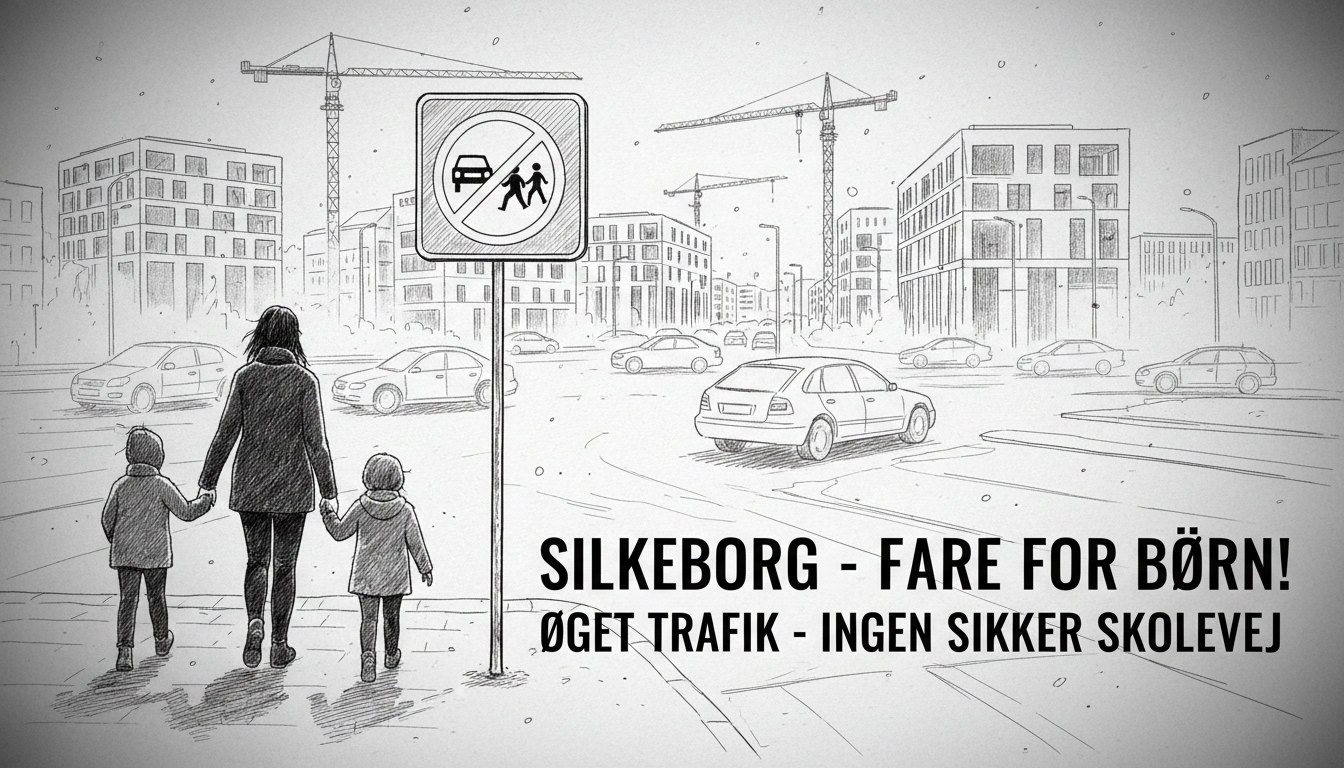A worried mother from Funder in Silkeborg warns that schoolchildren face serious traffic dangers on their daily commute. Heidi Sejr, mother of two eighth-grade students, says the situation has become increasingly unsafe as development expands in their residential area.
Heidi Sejr expresses deep concern about traffic safety near Damgårdsvej. She states the road conditions create genuine fear among local families. Children living south of Damgårdsvej must cross this busy road every school day. The current situation feels dangerous to parents and children alike.
The first phase of a new residential development in Funder has recently begun. Plans call for approximately 300 new homes in the area. Damgårdsvej currently ends as a dead-end street but will extend into the new neighborhood under local development plans.
Heidi Sejr predicts this extension will dramatically increase traffic volume. She describes the current road as no longer safe for children. Many parents now hesitate to let their children walk to school independently. The combination of more vehicles and children crossing creates what she calls a perfect storm for potential accidents.
Local authorities have taken notice of these concerns. Silkeborg Mayor Helle Gade recently visited the new development area. She examined the traffic situation firsthand after hearing from concerned residents.
The mayor acknowledges the validity of these safety worries. She describes the concerns as completely understandable and realistic. Mayor Gade has arranged an urgent meeting with the municipal roads director. She plans to present residents' traffic safety concerns directly.
Development plans include potential solutions. A new roundabout appears on planning documents to manage increased traffic flow. An alternative access route from an existing roundabout also remains under consideration.
Heidi Sejr argues that additional measures prove necessary. She specifically requests traffic calming measures along Damgårdsvej. Physical chicanes could slow vehicles and improve pedestrian safety. The goal involves making the route less attractive for through traffic.
This situation reflects broader challenges facing growing Nordic communities. Municipalities frequently balance development needs with resident safety. Danish planning processes typically involve extensive public consultation, yet safety concerns sometimes emerge during construction phases.
The mayor notes practical limitations exist. She cannot promise specific changes immediately. Technical requirements, legal frameworks, and budget considerations all influence final decisions. Traffic safety improvements require careful evaluation of multiple factors.
International readers might find Denmark's municipal structure relevant here. Danish communes hold substantial authority over local road planning and safety measures. This decentralized system allows local responsiveness but can create implementation delays.
Similar traffic safety debates occur across Nordic countries as urban areas expand. The tension between development and community safety represents a common challenge. Denmark's strong cycling and pedestrian traditions make these discussions particularly significant.
The situation in Funder demonstrates how ordinary citizens can influence local policy. Persistent community advocacy often drives safety improvements in Scandinavian municipalities. The outcome here could set precedents for other developing areas facing similar challenges.

